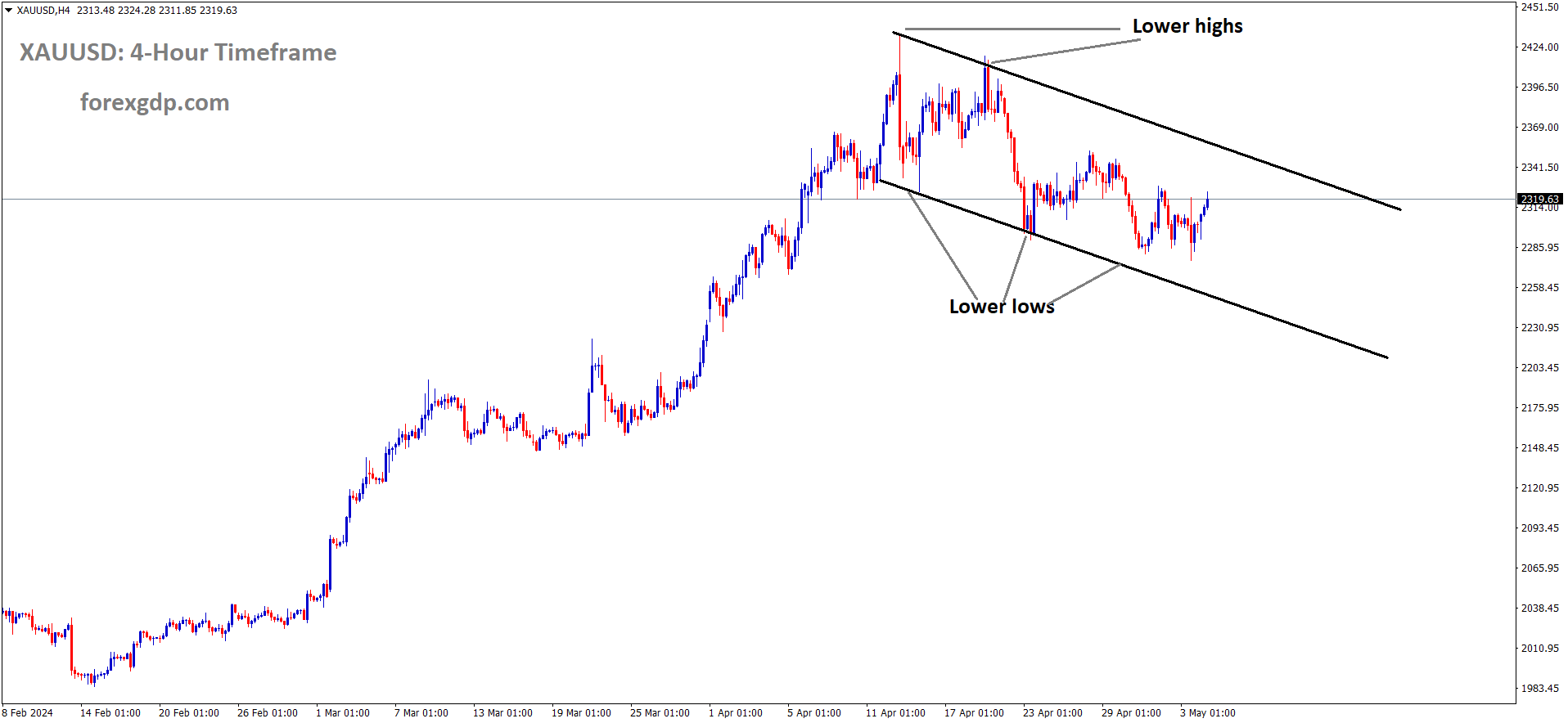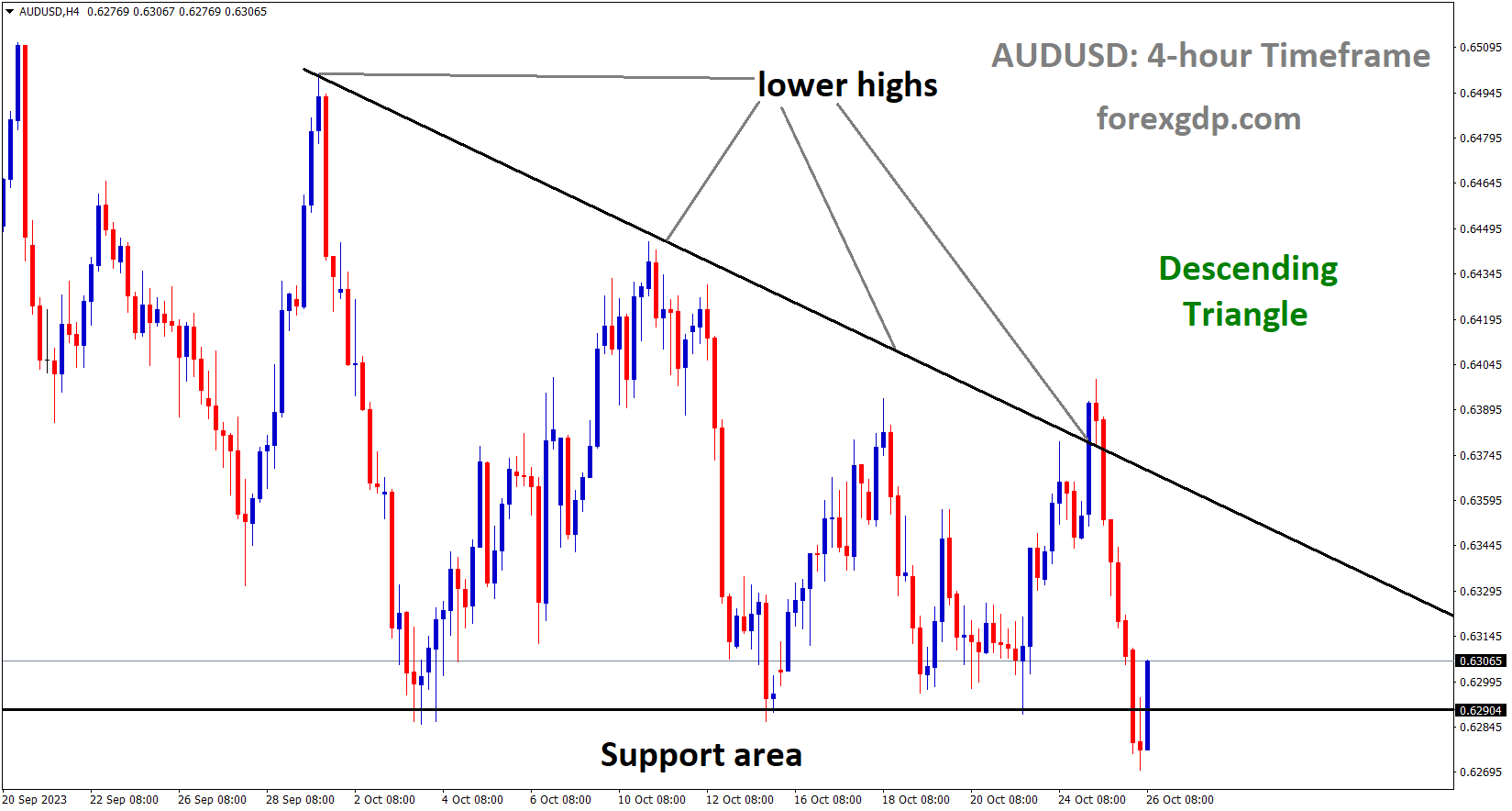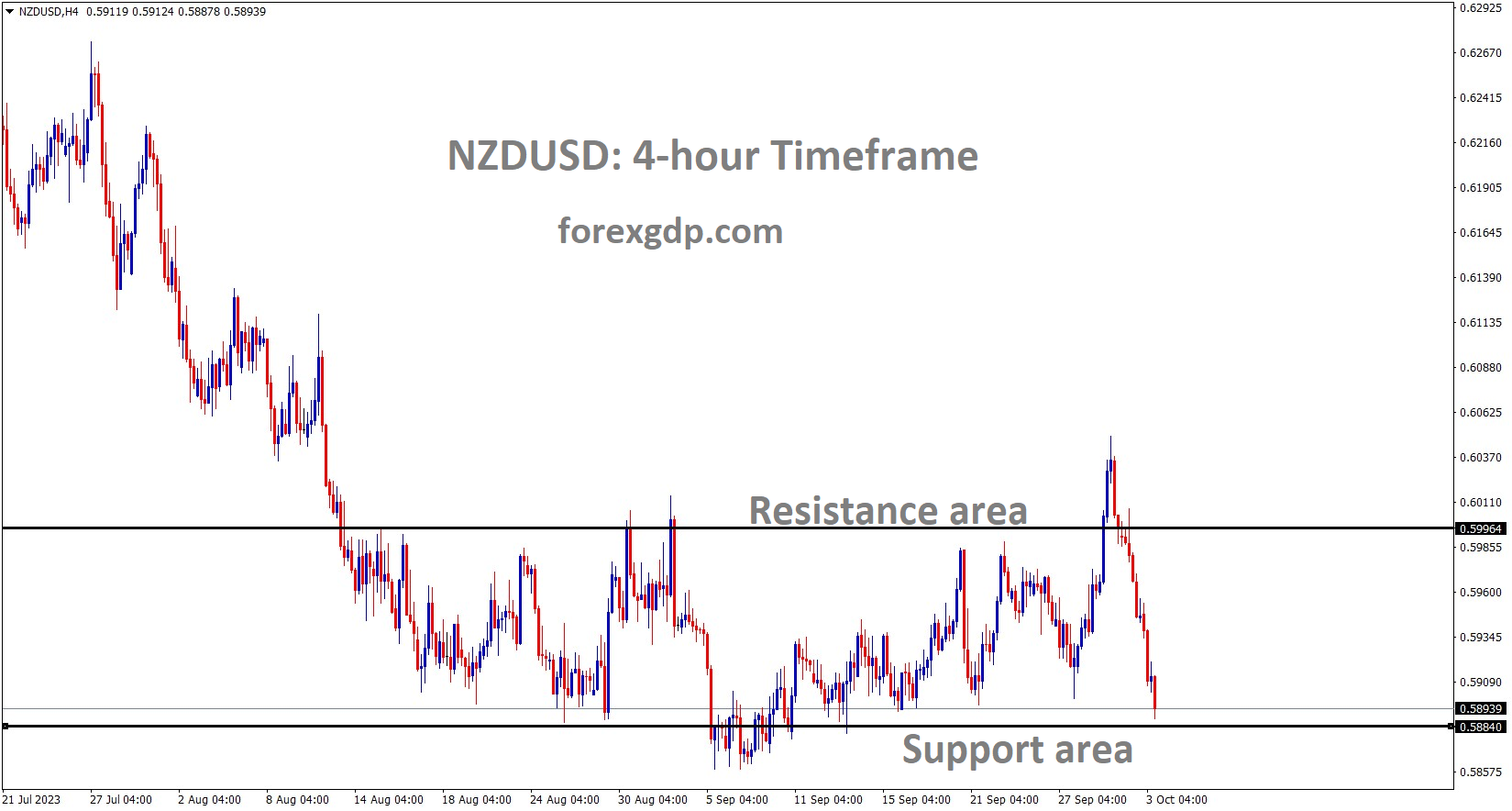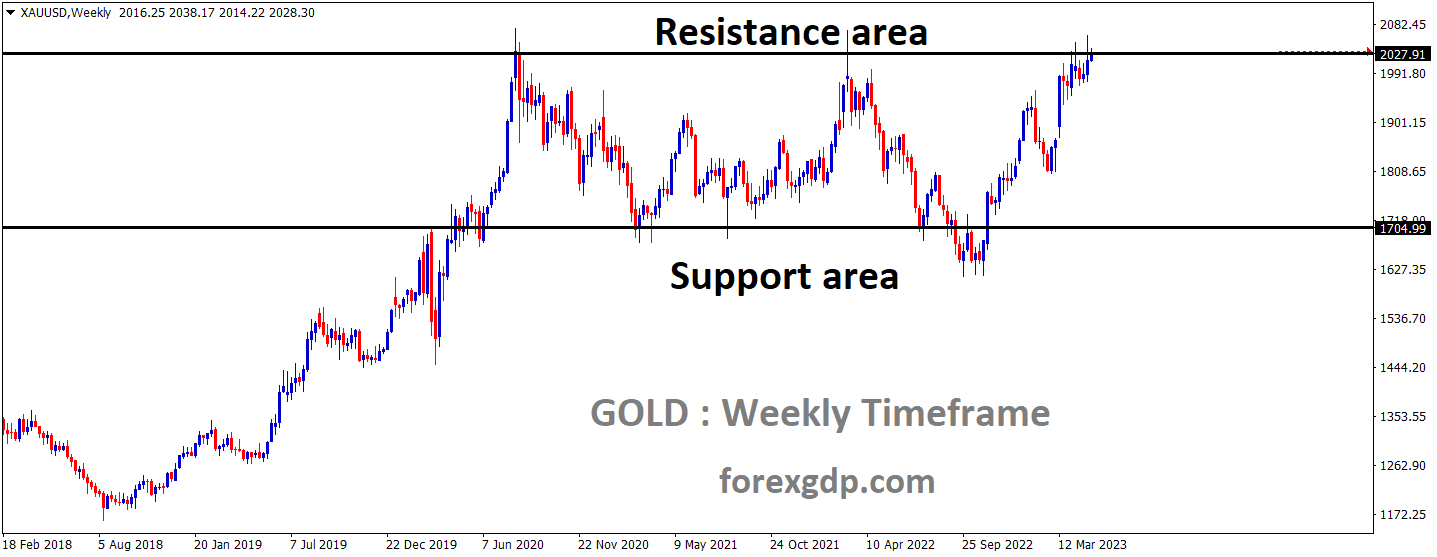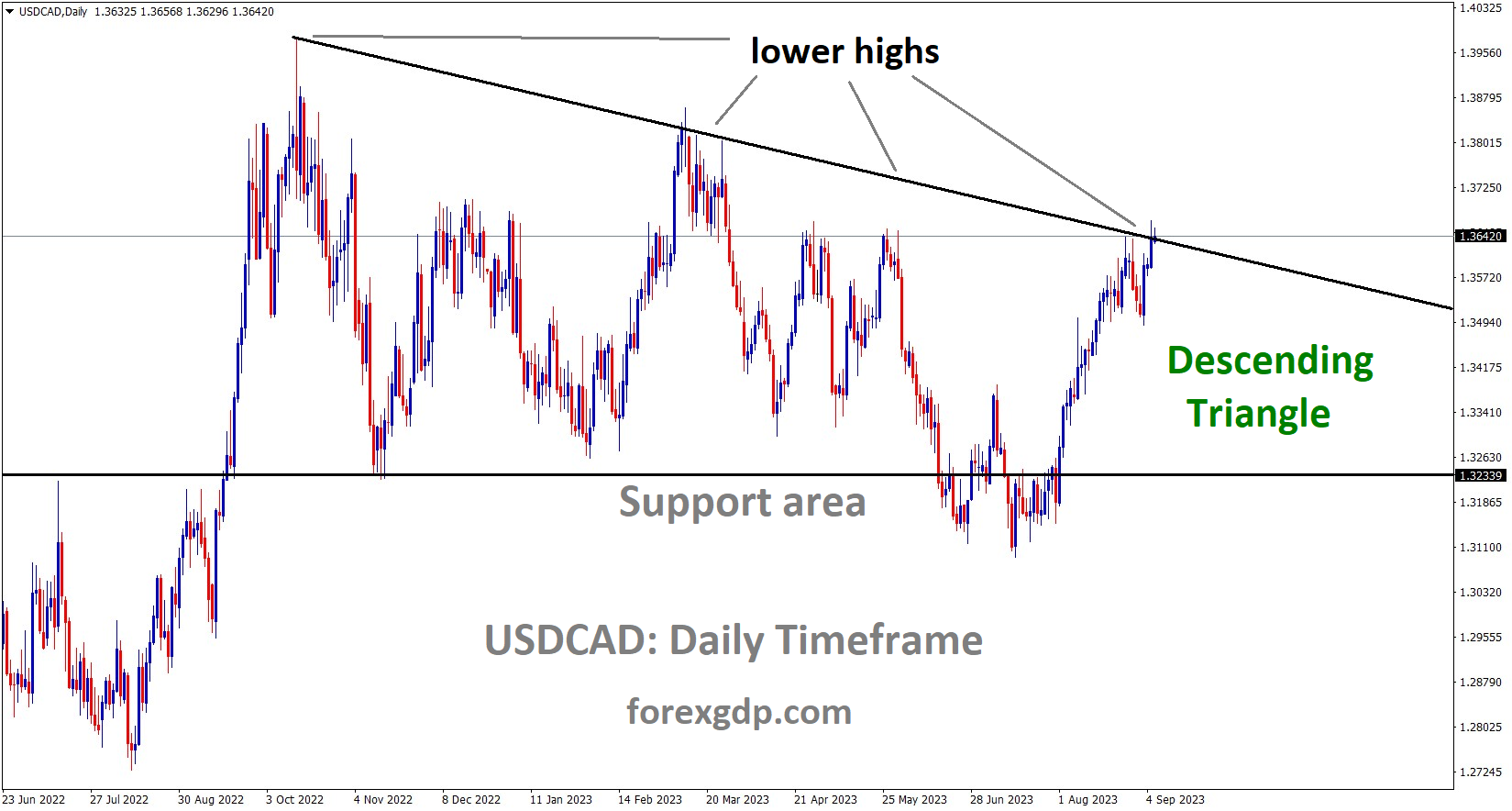XAUUSD Gold price is moving in the Descending channel and the market has rebounded from the lower low area of the channel
XAUUSD – Gold Price Rises on Weak NFP Data, Focus on Fedspeak
The Gold prices are moved higher after the firing tensions again between Israel- Hamas deal is not Yet reached. Another form is US have weak Job data and Wage inflation declined to 3.9% in the April month. This news makes September month rate cuts from FED is expected poll is 90% from 55% last week. So US Dollar weakness makes stronger for Gold in the market.
Gold price (XAU/USD) halted its two-day losing streak during the European session on Monday. The release of weaker-than-expected US employment reports has heightened the likelihood of a rate cut by the US Federal Reserve (Fed) in September. Consequently, this downward pressure on the US Dollar (USD) has provided support to the USD-denominated gold. Notably, a lower interest rate can reduce the opportunity cost of investing in gold, potentially increasing demand and prices.
However, the easing concerns regarding geopolitical tensions in the Middle East, particularly the Iran-Israel conflict, coupled with the prevailing risk-on sentiment, may dampen the demand for safe-haven assets, thereby limiting the upside for the yellow metal. Traders in the gold market will closely monitor Fedspeak throughout the week. Fed officials Thomas Barkin and John Williams are scheduled to deliver speeches on Monday. Any dovish signals from Fed policymakers could further bolster the XAU/USD pair.

In other news, the latest US economic data revealed that Nonfarm Payrolls (NFP) increased by 175,000 in April, down from March’s revised figure of 315,000, missing the market consensus of 243,000. Additionally, the Unemployment Rate rose to 3.9% in April from 3.8% previously, while Average Hourly Earnings dipped to 3.9% year-over-year in April from 4.1% in March. Furthermore, the US ISM Services Purchasing Managers’ Index (PMI) fell into contractionary territory, declining from 51.4 in March to 49.4 in April, below the market expectation of 52.0.
Fed Governor Michelle Bowman cautioned about the prolonged elevation of inflation, expressing readiness to hike rates if inflationary pressures persist or reverse. Chicago Fed’s Austan Goolsbee described the latest US employment report as solid, emphasizing the current restrictive stance of monetary policy.
As a result of these developments, expectations for Fed easing have shifted, with the odds of a rate cut in September soaring to nearly 90%, up from 55% prior to the release of the NFP report, according to the CME FedWatch tool.
EURUSD – ECB’s Lane: Increasing Confidence in Lowering Inflation
The ECB Chief Economist Philip Lane said he has more confidence on rate cut in the June month from ECB side due to April month inflation and Q1 GDP is more appreciated one and near to 2% target of inflation level. US and Euro Area has more divergence in the inflation area and we do appropriate reduction in Borrowing costs once inflation settled down to 2% target in Euro area.
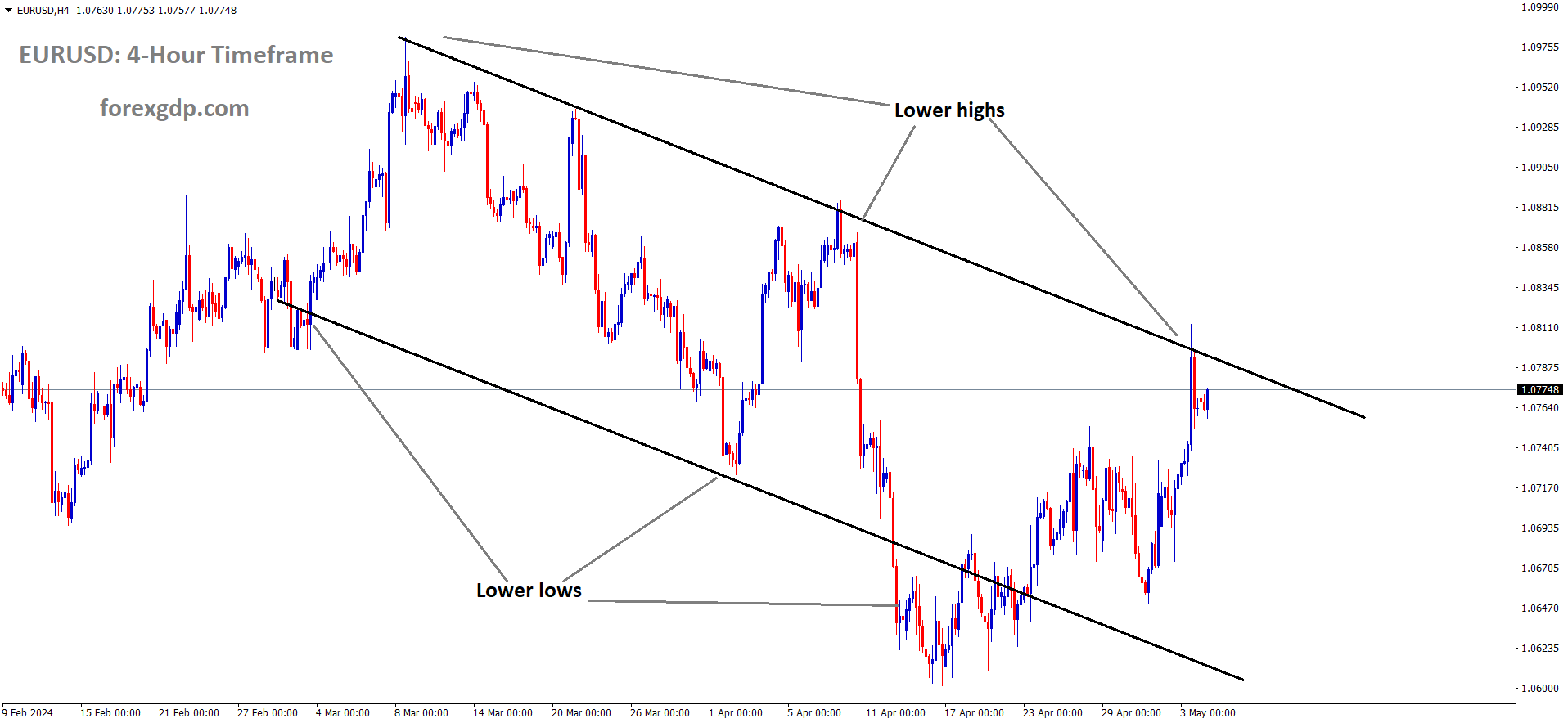
EURUSD is moving in the Descending channel and the market has reached the lower high area of the channel
Philip Lane, the Chief Economist of the European Central Bank (ECB), remarked on Monday that recent economic indicators from the Eurozone have bolstered his confidence in the prospect of inflation returning to the ECB’s target of 2%. This sentiment raises the likelihood of the ECB implementing its first interest-rate cut in June, as reported by Bloomberg.
Lane highlighted the significance of April’s flash estimate for Eurozone inflation and the first-quarter GDP figure, stating that they contribute to his growing confidence in the timely return of inflation to target levels. He emphasized that while his personal confidence level has improved since the ECB’s April meeting, ongoing data analysis is essential, as more data will be available leading up to the June meeting.

In discussing the broader economic landscape, Lane cautioned against overstating the impact of the US economy and interest rates on the Eurozone. He emphasized that these factors influence the Eurozone in distinct ways, often operating in opposite directions.
Lane also underscored the importance of assessing economic conditions on a month-by-month basis, while acknowledging the persistent geopolitical tensions that are expected to shape the global economic environment for years to come.
USDJPY – Rises to 153.70 on Stronger US Dollar
The Bank of Japan Intervention done on April 29 worth of Yen 6 Trillion and May 01 as Yen 3.66 Trillion makes Japanese Yen stronger against counter pairs in the market, But it is not officially announced by Bank of Japan. But Market clearly shows what the central banks did in the market.
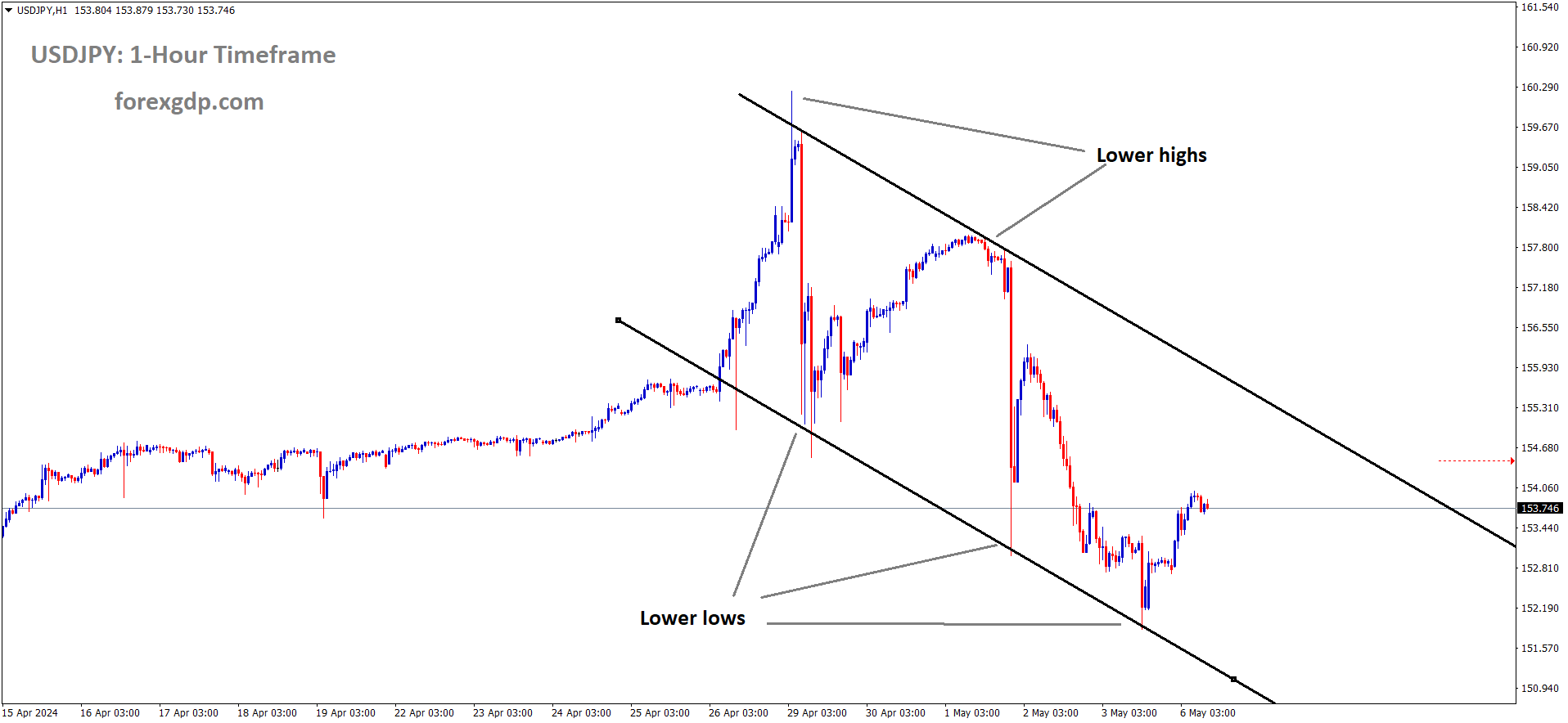
USDJPY is moving in the Descending channel and the market has rebounded from the lower low area of the channel
The decrease in the USD/JPY pair’s value can be attributed to the resurgence of the US Dollar (USD).
The US Dollar Index (DXY), which measures the USD’s performance against six major currencies, currently stands around 105.10. However, the Greenback’s upward momentum may be curbed by lower US Treasury yields.
Despite this, the US Dollar faced challenges due to the release of softer-than-expected US jobs data on Friday. This development has renewed expectations for potential interest rate cuts by the US Federal Reserve (Fed) later in the year. Moreover, the prevailing risk appetite in the market may persist following Fed Chair Jerome Powell’s relatively dovish stance on monetary policy during Wednesday’s session.
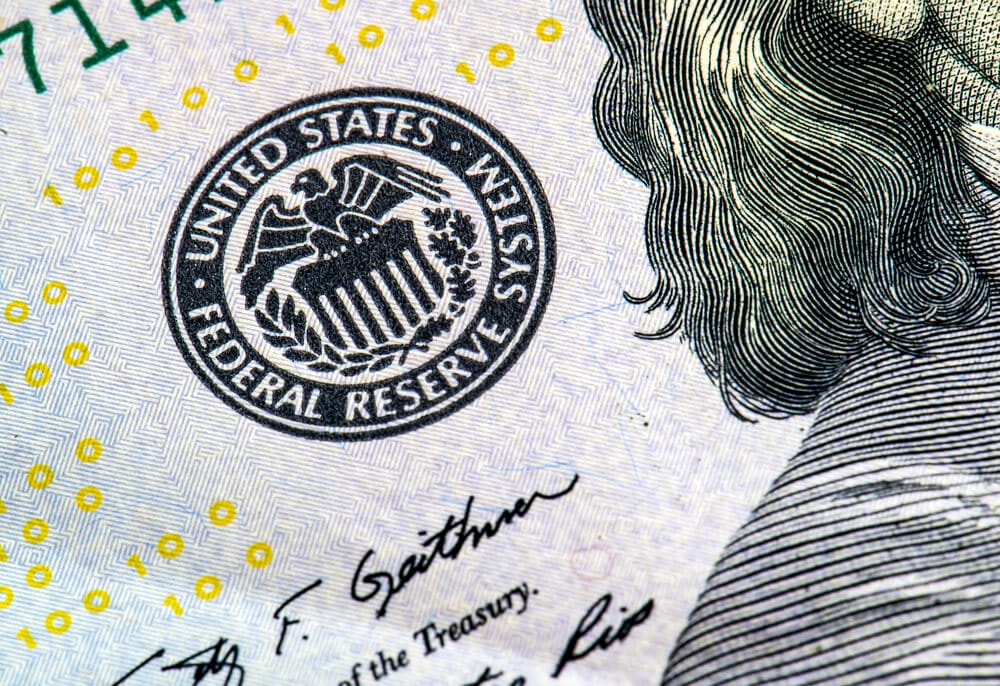
Federal Reserve Bank of Chicago President Austan Goolsbee, speaking to Bloomberg TV on Friday, characterized April’s labor market data as robust. Goolsbee emphasized the importance of the Fed’s commitment to combating inflation. He highlighted that if the Fed maintains a restrictive stance for an extended period, it will need to consider the employment aspect of its mandate.
In Japan, markets remained closed on Monday due to a national holiday, with intervention risks lingering. Last week, the Japanese Yen (JPY) strengthened amid potential government intervention by Japanese authorities. Reuters reported that data from the Bank of Japan (BoJ) suggested that Japanese authorities may have allocated approximately ¥6.0 trillion on April 29 and ¥3.66 trillion on May 1 to bolster the JPY.
USDCAD – Stays Below 1.3700, Eyes Fedspeak and Canadian PMI Data
The Canadian Dollar moved higher after the Oil prices moved higher as the Stopping war deal is rejected by Israel to Hamas plea. This week Canadian PMI, employment data is scheduled. The BoC Governor Tiff Mackhlem said rate cuts is soon expected in the near months if inflation reached to our 2% target.
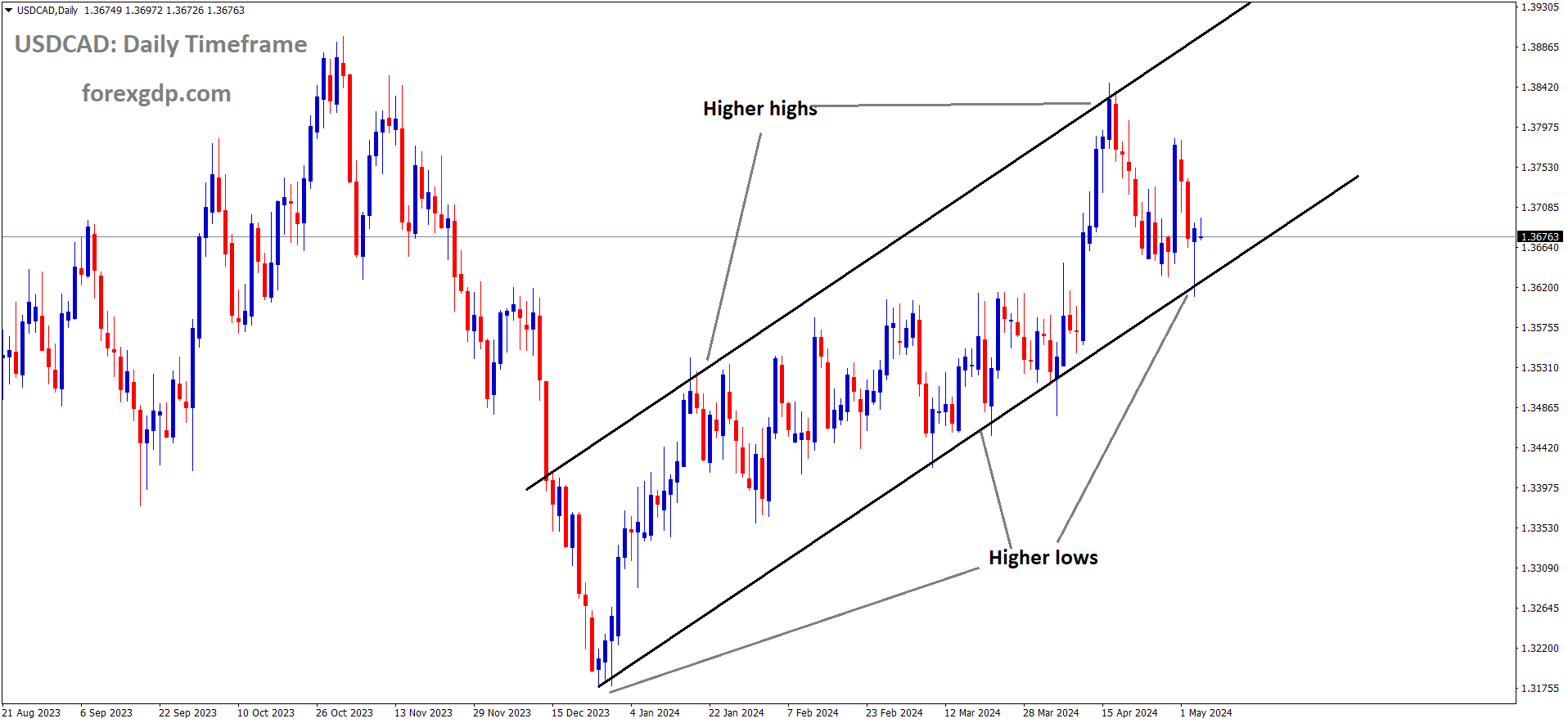
USDCAD is moving in an Ascending channel and the market has reached the higher low area of the channel
The USD/CAD pair is holding near 1.3685 levels on Monday during the early European trading hours. The Canadian Dollar (CAD) is gaining ground as crude oil prices rise, posing a challenge for USD/CAD. Traders are keenly awaiting the release of Canada’s Ivey Purchasing Managers Index (PMI) and April employment data, which could provide insights into the economic outlook and inflation trajectory in Canada. Additionally, attention is focused on Fedspeak, with the Fed’s Thomas Barkin and John Williams scheduled to speak later in the day.
On Friday, disappointing US data raised speculation that a cooling labor market could prompt the Federal Reserve (Fed) to cut interest rates in September. The Labor Department reported that the US added 175,000 jobs in April, down from 315,000 in March (revised from 303,000), falling short of market expectations of 243,000. Moreover, the Unemployment Rate climbed from 3.8% in March to 3.9% in April, while Average Hourly Earnings, a measure of wage inflation, declined to 3.9% YoY in April from 4.1% in the previous reading. Additionally, the ISM Services PMI dropped to 49.4 in April from 51.4 in March, below the forecast of 52.0. The US Dollar faced selling pressure across the board following this data, as markets adjusted expectations for Fed rate cuts. According to the CME Fedwatch tool, financial markets have priced in nearly a 68% chance of a September rate cut by the Fed.

Regarding the Canadian Dollar, Bank of Canada (BoC) governor Tiff Macklem indicated last week that the central bank is increasingly confident that inflation is moving in the right direction, hinting at a possible reduction in borrowing costs. However, he tempered expectations by suggesting that interest rates may not decrease rapidly. Traders are anticipating the BoC to commence monetary easing at its upcoming meeting in June, based on Refinitiv data. If the Canadian central bank lowers interest rates before the Fed, it could weigh on the Canadian Dollar (CAD) and limit the downside for the USD/CAD pair. Furthermore, the recovery in oil prices is bolstering the commodity-linked Loonie against its peers, given Canada’s status as the largest oil exporter to the United States (US).
USDCHF – Azure OpenAI Boosts Swiss Firms’ AI Advantage
The Microsoft company Azure Subsidiary AI platforms is launched in Geneva, Switzeraland for AI based process of digital platforms supporting. This is the next generation level of work upgradation in Switzerland. This is the welcome one for Swiss economy and work will close faster by AI Technologies than now.
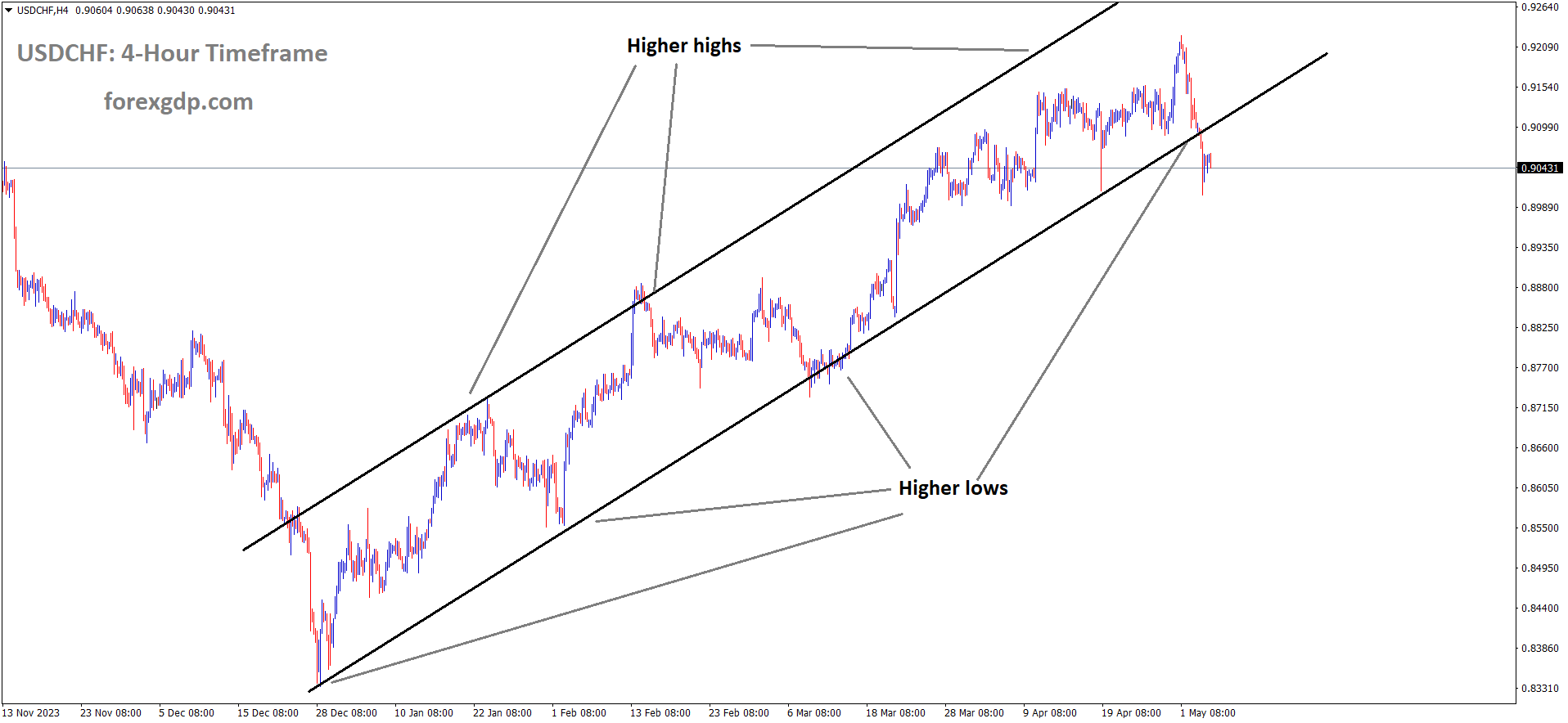
USDCHF is moving in an Ascending channel and the market has reached the higher low area of the channel
A new research report by Information Services Group (ISG) suggests that Switzerland’s status as an AI leader could be further solidified with Microsoft’s plans to introduce Azure OpenAI services to Swiss data centers. The addition of these services to data centers in Zürich and Geneva could enhance Switzerland’s standing as a hub for AI research and development, enabling local enterprises to comply with regulations while swiftly deploying AI-based solutions.
Uwe Ladwig, managing director of ISG Switzerland, notes that IT service providers are increasingly tailoring their offerings to the specific demands of AI and GenAI, opening up opportunities for Swiss companies to enhance efficiency and gain competitive advantages.
Despite the growing adoption of cloud services, the Swiss market is far from saturation. The ISG report predicts significant long-term growth in this sector, with increased demand for cloud services in 2024, particularly in networking.
Microsoft, as a pioneer in integrating AI and cloud technologies into products like Azure, Microsoft 365, and Dynamics 365, is setting standards in the field. The progressive introduction of GenAI has led to groundbreaking solutions and transformed the Microsoft ecosystem.
The launch of Microsoft’s Copilot represents a milestone for the company, signaling its ambition to consolidate and commercialize its leading position in GenAI. Notably, GitHub’s substantial revenue growth, driven by the popularity of GitHub Copilot, exemplifies the success of Microsoft’s AI initiatives.

Jan Erik Aase, partner and global leader at ISG Provider Lens Research, emphasizes the growing interest in Microsoft’s AI focus in Switzerland. Enterprises in Switzerland, particularly those in the early stages of their AI journey, are exploring essential Microsoft 365 and Azure functions and services to achieve significant success and added value.
The report also delves into Microsoft’s significant financial investments in expanding AI and cloud infrastructures. It evaluates the capabilities of 45 providers across various quadrants, highlighting leaders like Swisscom and SoftwareONE, along with rising stars in the industry.
Furthermore, the report recognizes Bechtle as the global ISG CX Star Performer for 2024 among Microsoft cloud ecosystem partners, based on its outstanding customer satisfaction scores.
Customized versions of the report are available from Bechtle and Swisscom, providing valuable insights into the Microsoft cloud ecosystem’s challenges and opportunities for enterprises in Switzerland.
USD INDEX – USD ends losing week after weak NFP
The US NFP Data for the month of April came at 175K versus 243K expected and 315K printed in the march month. The Unemployment rate came at 3.9% from 3.8% printed in the last month. The Average hourly earning index fell down to 3.9% in the April from 4.1% printed in the March month. So US Dollar fell down against counter pairs after the expected FED rate cuts in September month due to weak Job data.
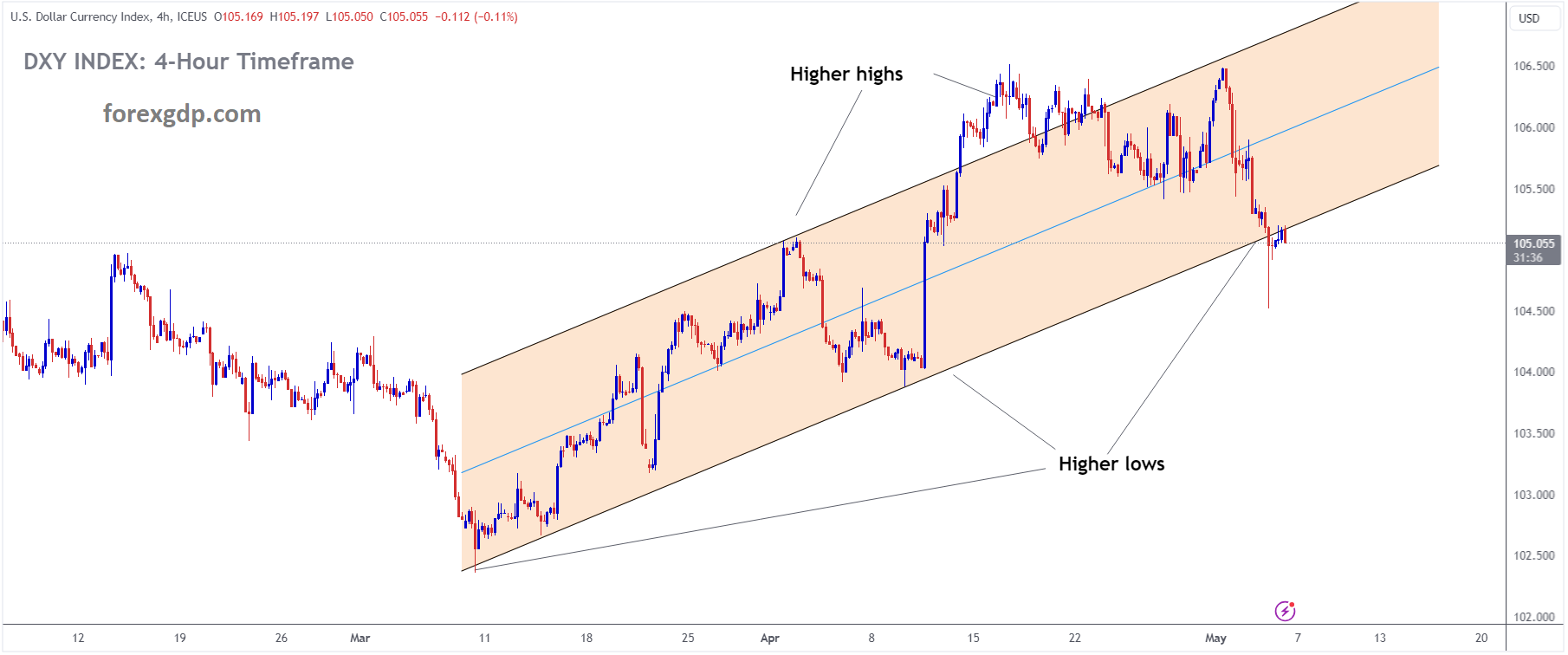
USD Index is moving in an Ascending channel and the market has reached the higher low area of the channel
The US Dollar Index (DXY) has seen a notable decline, approaching the 105 level, marking significant losses as the trading week draws to a close. This downturn follows the release of disappointing US Nonfarm Payrolls (NFP) data for April on Friday, prompting a widespread sell-off of the USD in the markets.
The current state of the US economy presents a mixed picture of progress, characterized by robust demand and a tight labor market, alongside gradual yet noteworthy wage growth, which has contributed to inflationary pressures. Federal Reserve (Fed) Chair Jerome Powell has maintained a cautious stance regarding the uncertain trajectory of inflation, underscoring that the Fed’s prudent monetary policies have been instrumental in preventing economic overheating. However, the weak labor market data released on Friday has led market participants to increase their expectations of interest rate cuts by the Fed, particularly in September.

Key highlights from the daily market digest include:
– The US NFP report for April revealed an increase of 175K jobs, falling short of expectations set at 243K and indicating a decline from the revised 315K growth recorded in March.
– The unemployment rate experienced a rise from 3.8% to 3.9%.
– Wage inflation, as measured by Average Hourly Earnings, decreased to 3.9% year-on-year from the previous 4.1%.
– Market sentiment regarding a potential Fed rate reduction by September has strengthened following the release of weak labor market data.
Furthermore, US Treasury bond yields have witnessed a significant decrease, with the 2-year yield dropping to 4.80%, while the 5-year and 10-year yields declined to 4.50% and 4.58%, respectively.
GBPUSD – Nears 1.2550 on Fed’s Dovish Sentiment
The BoE Governor Andrew Bailey said April month inflation will return to the target of 2%, March month printed 3.2% inflation reading and it is lowest Since September 2021. Wage growth in the March month printed higher and it is concern for BoE whether inflation will increase once again from consumer spending after the increasing the wages of Labours. So BoE try to maintain 5.25% in this Thursday meeting is expected from economists side.
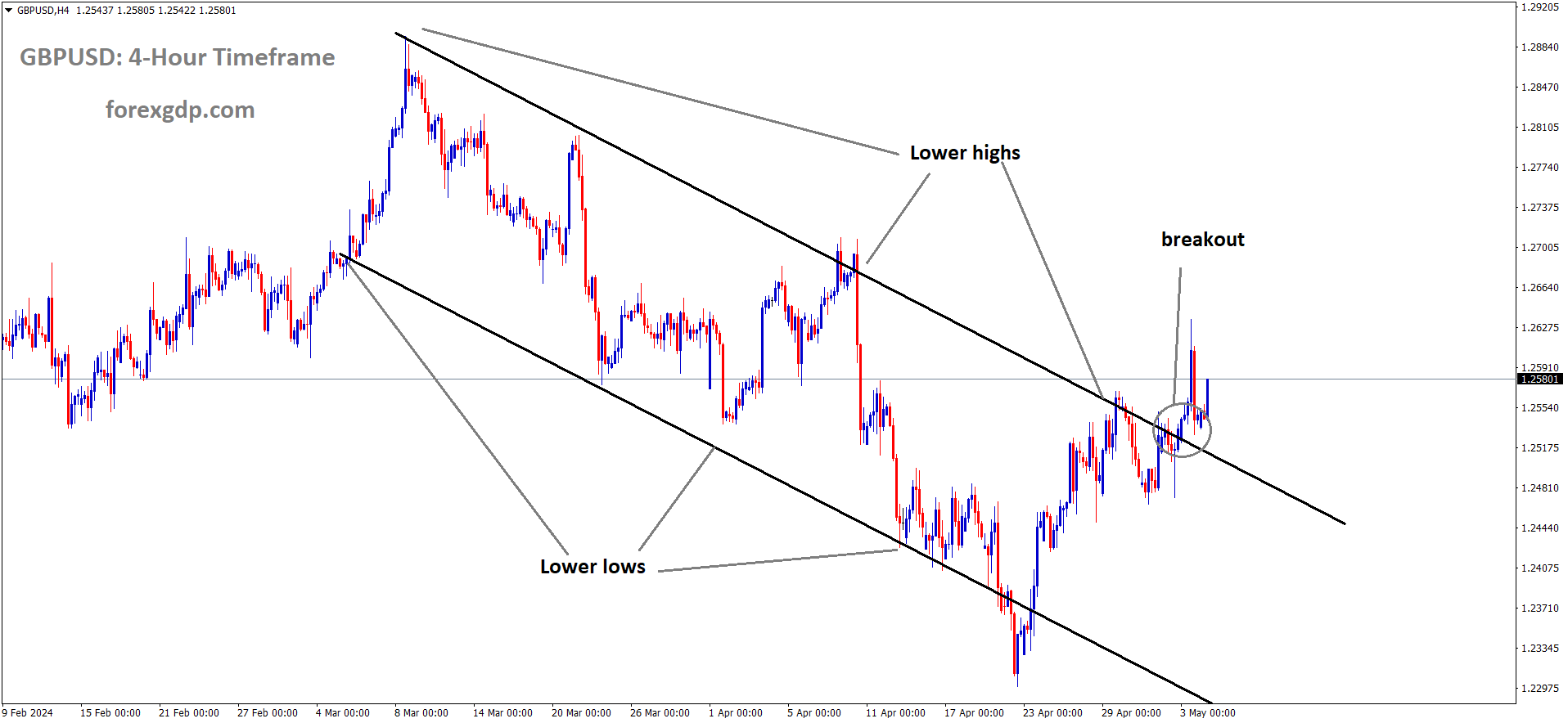
GBPUSD has broken the Descending channel in upside
GBP/USD is on a winning streak, marking its fourth consecutive day of gains as it hovers around 1.2550 during Monday’s Asian trading hours. The surge in the GBP/USD pair is attributed to revised expectations for interest rate cuts by the Federal Reserve (Fed) in 2024, fueled by lower-than-expected jobs data from the United States (US).
On Friday, the US Nonfarm Payrolls report revealed that the US economy added 175,000 jobs in April, missing the estimated 243,000 and signaling a notable slowdown from the previous month’s addition of 315,000 jobs. Moreover, April’s Average Hourly Earnings (YoY) saw a slight increase of 3.9%, falling slightly below expectations of 4.0% and down from the previous 4.1%. Monthly growth in earnings also fell slightly short at 0.2%, compared to the anticipated 0.3%.
This data has prompted a recalibration of expectations regarding the timing of the Fed’s initial interest rate cut, with September now emerging as a more likely timeframe, shifting from earlier projections indicating November. According to the CME FedWatch Tool, the probability of a 25 basis points (bps) rate reduction during the September meeting has climbed to 48.8%, up from 43.8% a week earlier.

Meanwhile, across the Atlantic, the Bank of England (BoE) is anticipated to maintain its rates unchanged at 5.25% during Thursday’s meeting. Speculation about potential interest rate cuts by the BoE has been pushed back to September amid concerns about robust wage growth in the United Kingdom (UK), which is contributing to core inflation, the central bank’s preferred inflation metric.
In April, BoE Governor Andrew Bailey expressed optimism as UK inflation appeared to be aligning with the 2% target. The inflation rate dipped to 3.2% in March, marking the lowest rate since September 2021.
AUDUSD – China’s Caixin Services PMI dips to expected 52.5 in April
The China Caixin Services PMI data for the month of April came at 52.5 from 52.7 printed in the March month. The Australian Dollar is benefitted by China Services data fell in lower margin level.
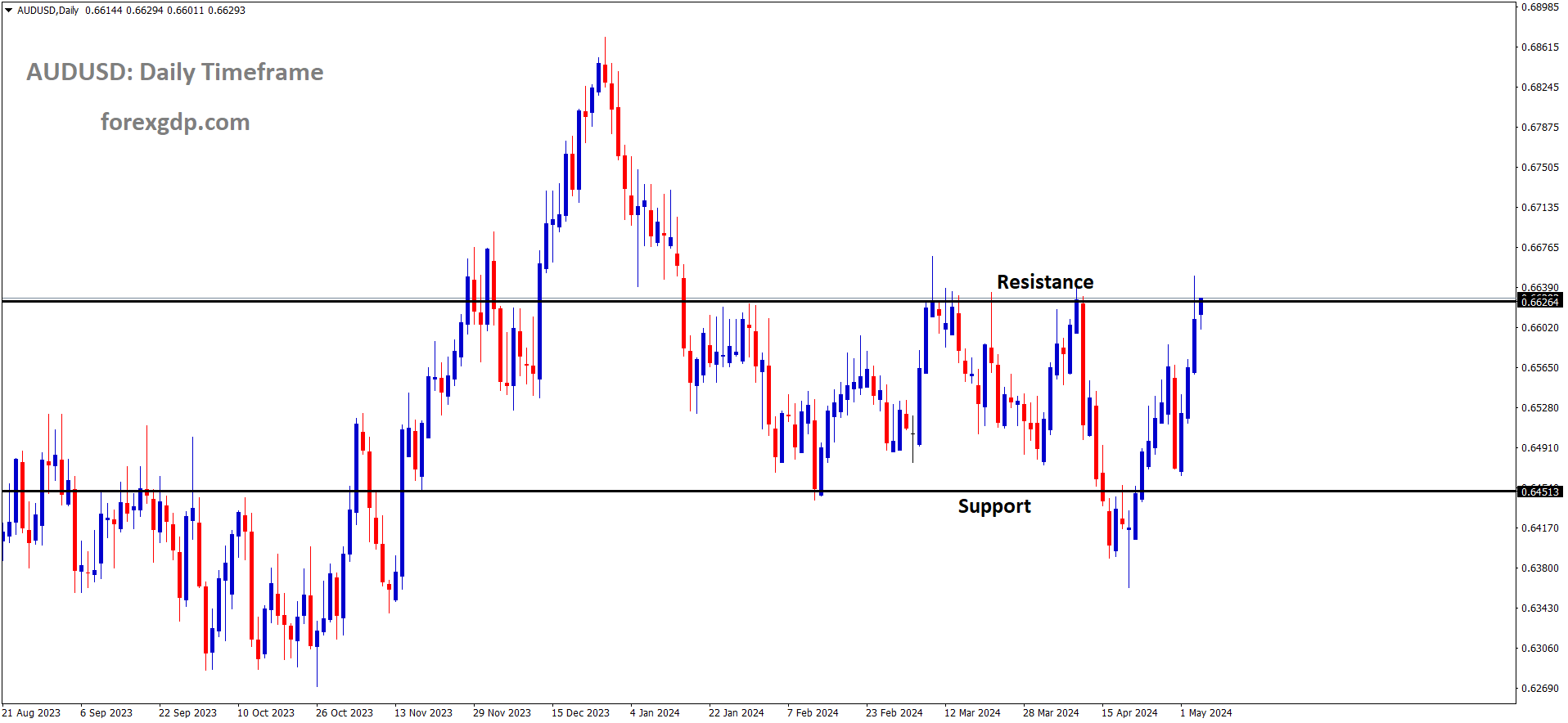
AUDUSD is moving in the Box pattern and the market has reached the resistance area of the pattern
According to the latest data released by Caixin on Tuesday, China’s Services Purchasing Managers’ Index (PMI) for April registered a slight decline to 52.5, down from March’s figure of 52.7. This reading aligns with market forecasts for the reported period.
NZDUSD – Dips Near 0.6000 Amid Stable US Dollar
The NZ Dollar moved higher in the market after the US Unemployment rate rise to 3.9% in the April month, wage inflation declined to 3.9% from 4.1% printed in the previous month. So US Dollar moved down as the hopes of FED rate cuts soon in this year. RBNZ have the hopes of rate cuts in 2025 not in 2024 makes NZ Dollar moved at fast pace in upside against counter pairs.
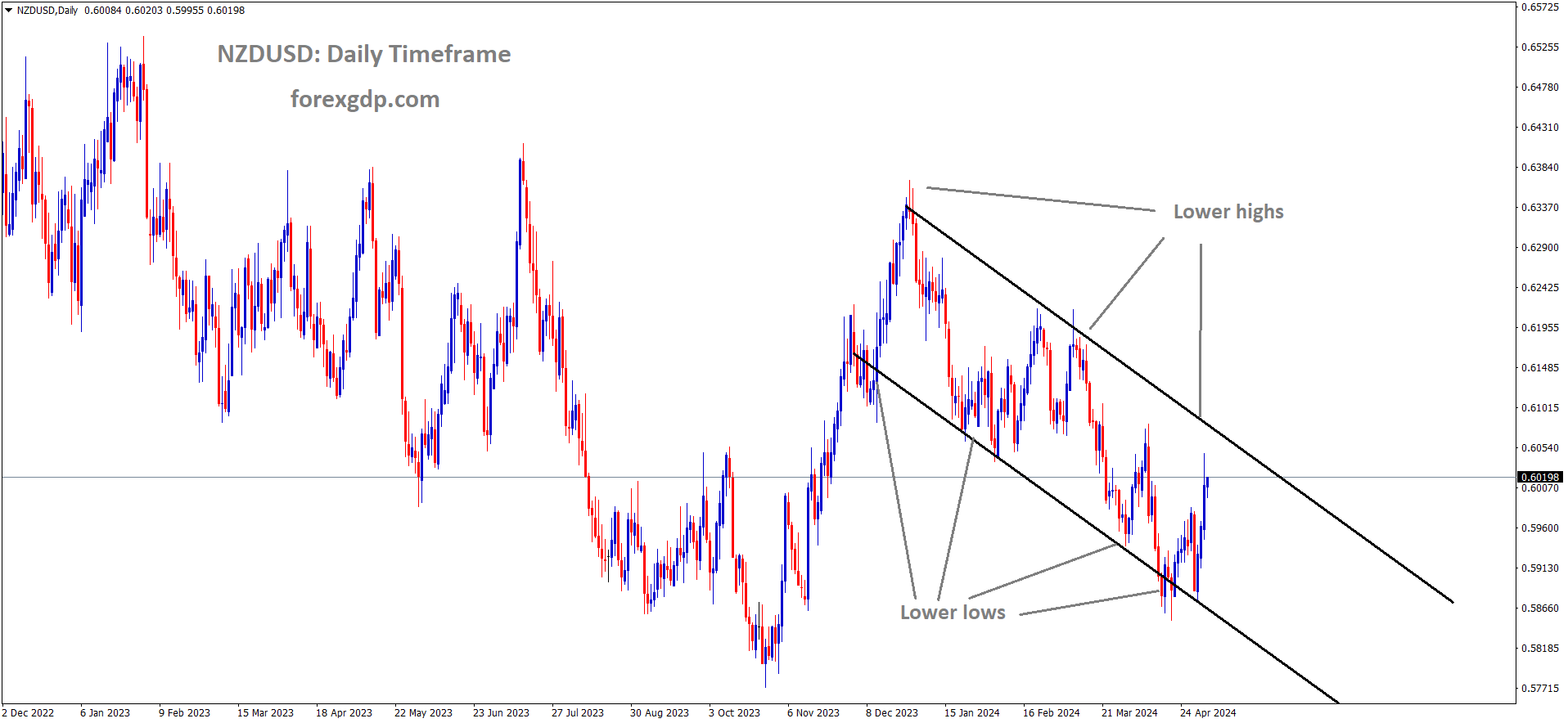
NZDUSD is moving in the Descending channel and the market has reached the lower high area of the channel
The NZD/USD pair saw a marginal decline following three consecutive days of gains, trading around the 0.6000 level during Monday’s Asian session. This dip in the pair is attributed to the resurgence of the US Dollar (USD).
The US Dollar Index (DXY), which measures the performance of the USD against a basket of six major currencies, is hovering around 105.20 at the time of writing. The USD’s ascent may be constrained by lower US Treasury yields.
However, the USD faced challenges following the release of softer-than-expected US jobs data on Friday. This development reignited speculation about potential interest rate cuts by the US Federal Reserve (Fed) later in the year. Market sentiment is likely to remain upbeat this week, following Fed Chair Jerome Powell’s relatively dovish remarks on the monetary policy outlook during Wednesday’s session.
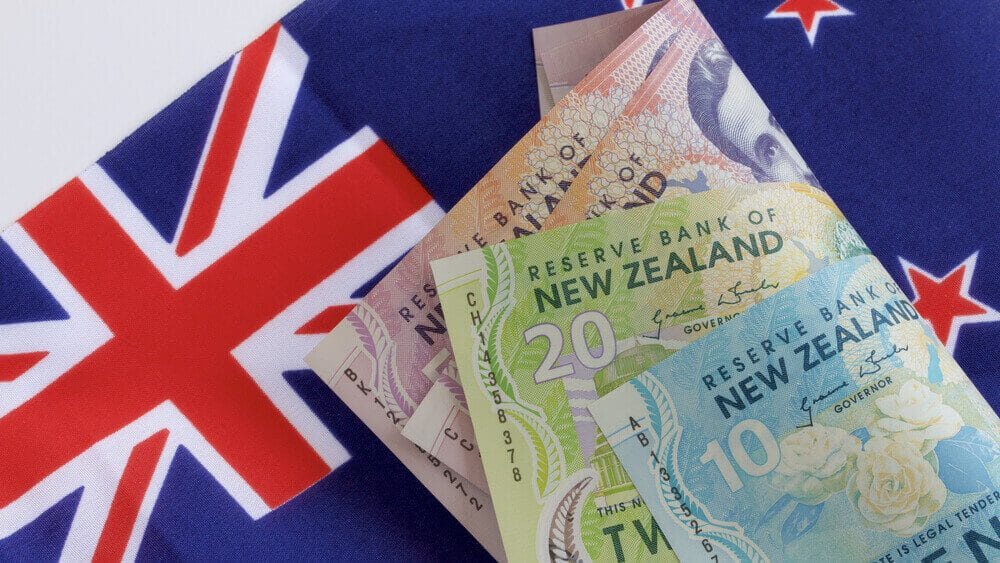
On the New Zealand Dollar (NZD) front, China’s Caixin Services Purchasing Managers’ Index (PMI) dipped slightly to 52.5 in April, down from 52.7 in March, in line with market expectations. Despite this, it marks the 16th consecutive month of expansion in services activity. This could provide a boost to New Zealand’s market, given its significant export ties with China.
Last week, the Reserve Bank of New Zealand (RBNZ) indicated its intention to postpone any shift towards monetary easing until 2025, citing higher-than-anticipated inflation pressures in the first quarter. This stance is likely to continue supporting the New Zealand Dollar (NZD), thereby underpinning the NZD/USD pair.
CRUDE OIL – WTI Stops Slump as Saudi Raises June Oil Prices
The Oil prices extended gains after the Saudi Arabia rises Oil prices in the June month for Asia, Europe and Mediterranean countries. Israel rejected the Hamas request of release of hostages in equal manner and close the War to end. This news renewed fears on the Supply Side of Oil. US FED eased the treasury savings to $25 Billion from $60 Billion this shows more spending in the economy and US Dollar weakness in the market. This is also support for Oil prices to Gain.
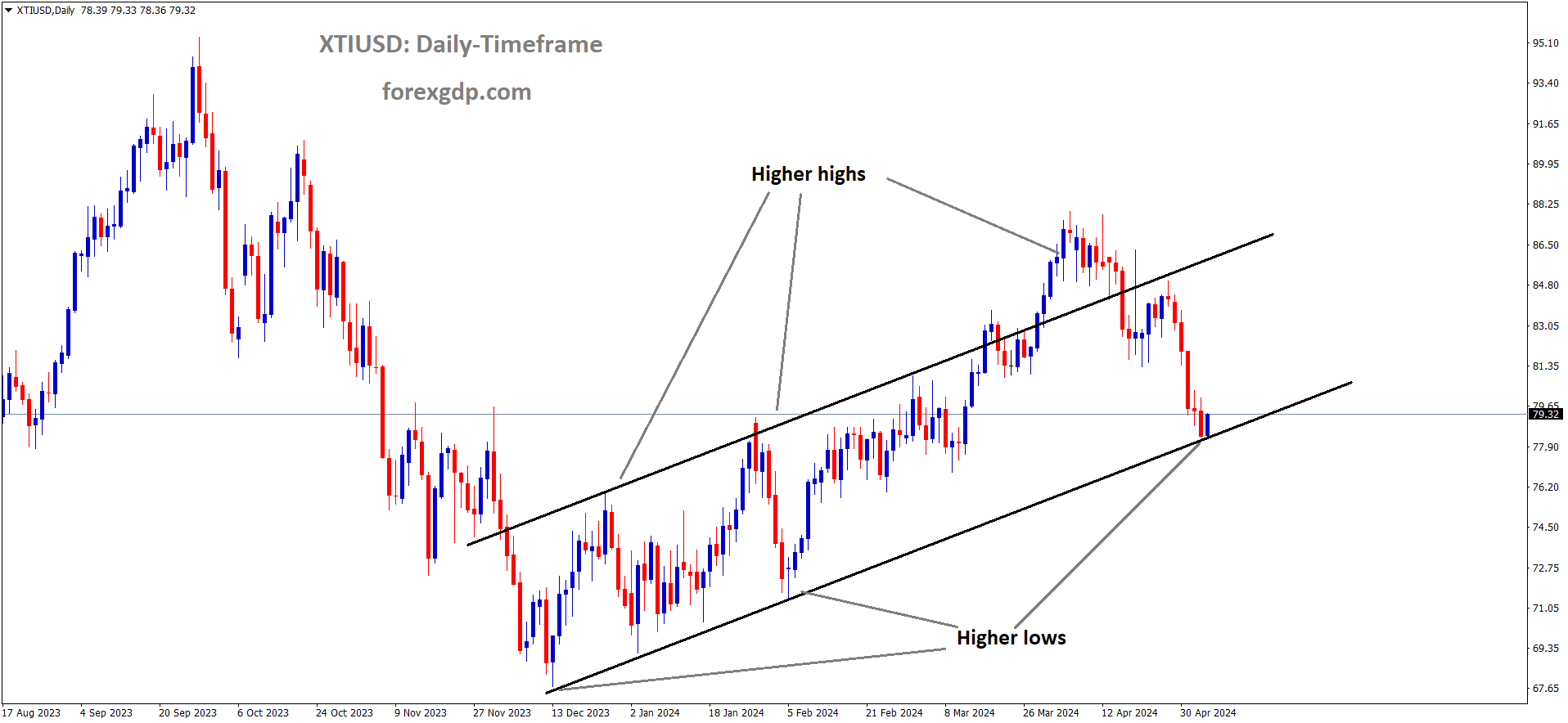
XTIUSD Crude Oil price is moving in an Ascending channel and the market has reached the higher low area of the channel
WTI Crude Oil Breaks Losing Streak as Saudi Arabia Hikes June Prices
In the Asian session on Monday, the West Texas Intermediate (WTI) crude oil price bounced back, hovering around $78.20 per barrel. This uptick came after Saudi Arabia announced increased June crude prices for most regions. The hike in Official Selling Prices (OSPs) for crude sold to Asia, Northwest Europe, and the Mediterranean suggests expectations of robust demand in the upcoming summer season.
Additionally, the Organization of the Petroleum Exporting Countries and its allies (OPEC+) are likely to maintain current oil production levels for another three months. This decision is expected when ministers reassess output allocations on June 1. Last week, OPEC+ producers expressed readiness to extend voluntary output cuts of 2.2 million barrels per day (bpd) if oil demand doesn’t recover as anticipated.

Geopolitically, concerns over a potential failure of a Gaza ceasefire deal have pushed oil prices higher. The ongoing Israel-Hamas conflict in the Middle East raises fears of escalated tensions, with Hamas linking a ceasefire to the release of hostages, a demand rejected by Israeli Prime Minister Benjamin Netanyahu.
On the demand side, lower-than-expected US job data has renewed hopes for Federal Reserve interest rate cuts, which could stimulate economic activity in the US. This, in turn, may boost oil demand. Additionally, the prospect of lower interest rates is pressuring the US Dollar (USD), making crude oil more affordable for countries using alternative currencies.
Don’t trade all the time, trade forex only at the confirmed trade setups
Get more confirmed trade signals at premium or supreme – Click here to get more signals , 2200%, 800% growth in Real Live USD trading account of our users – click here to see , or If you want to get FREE Trial signals, You can Join FREE Signals Now!

